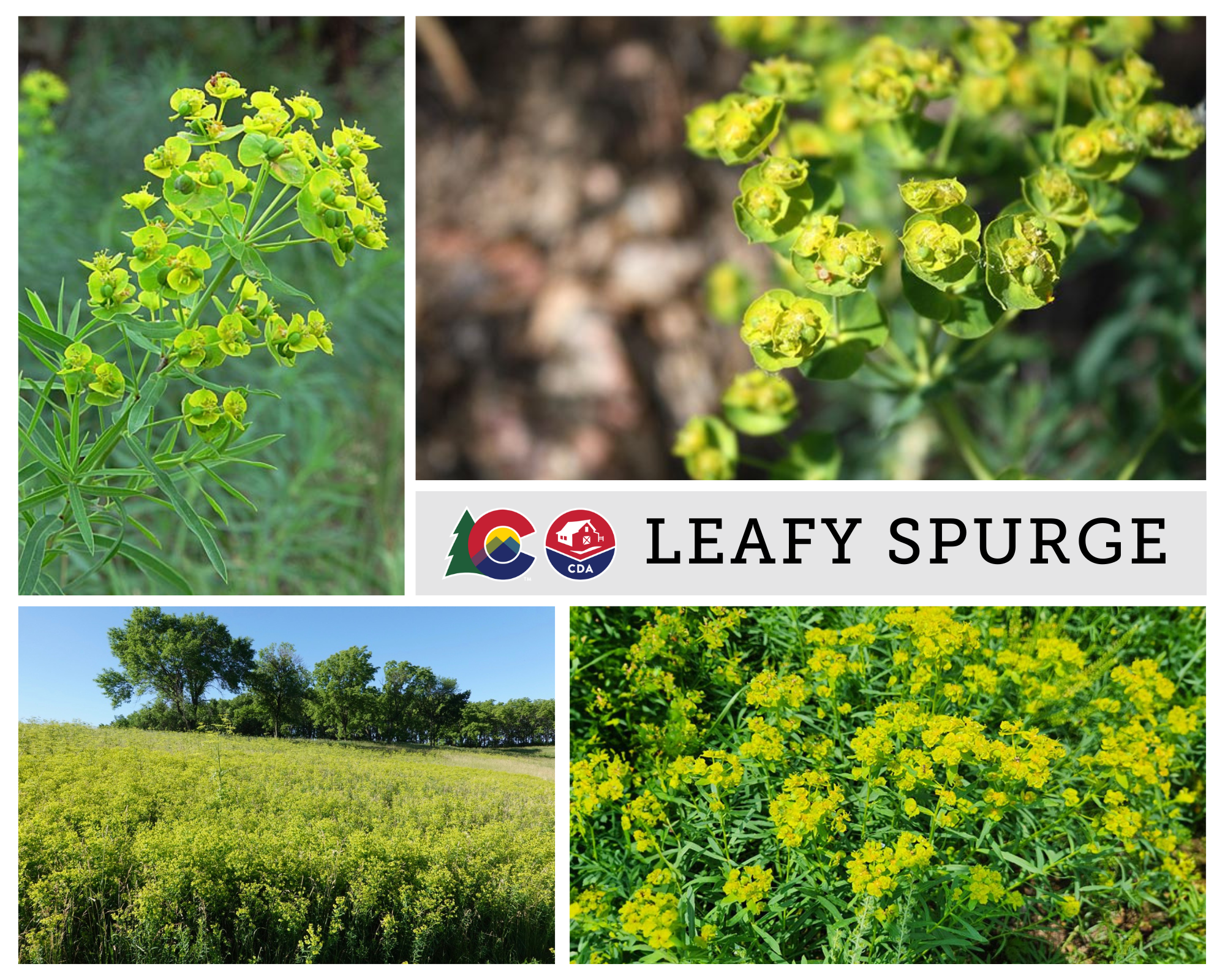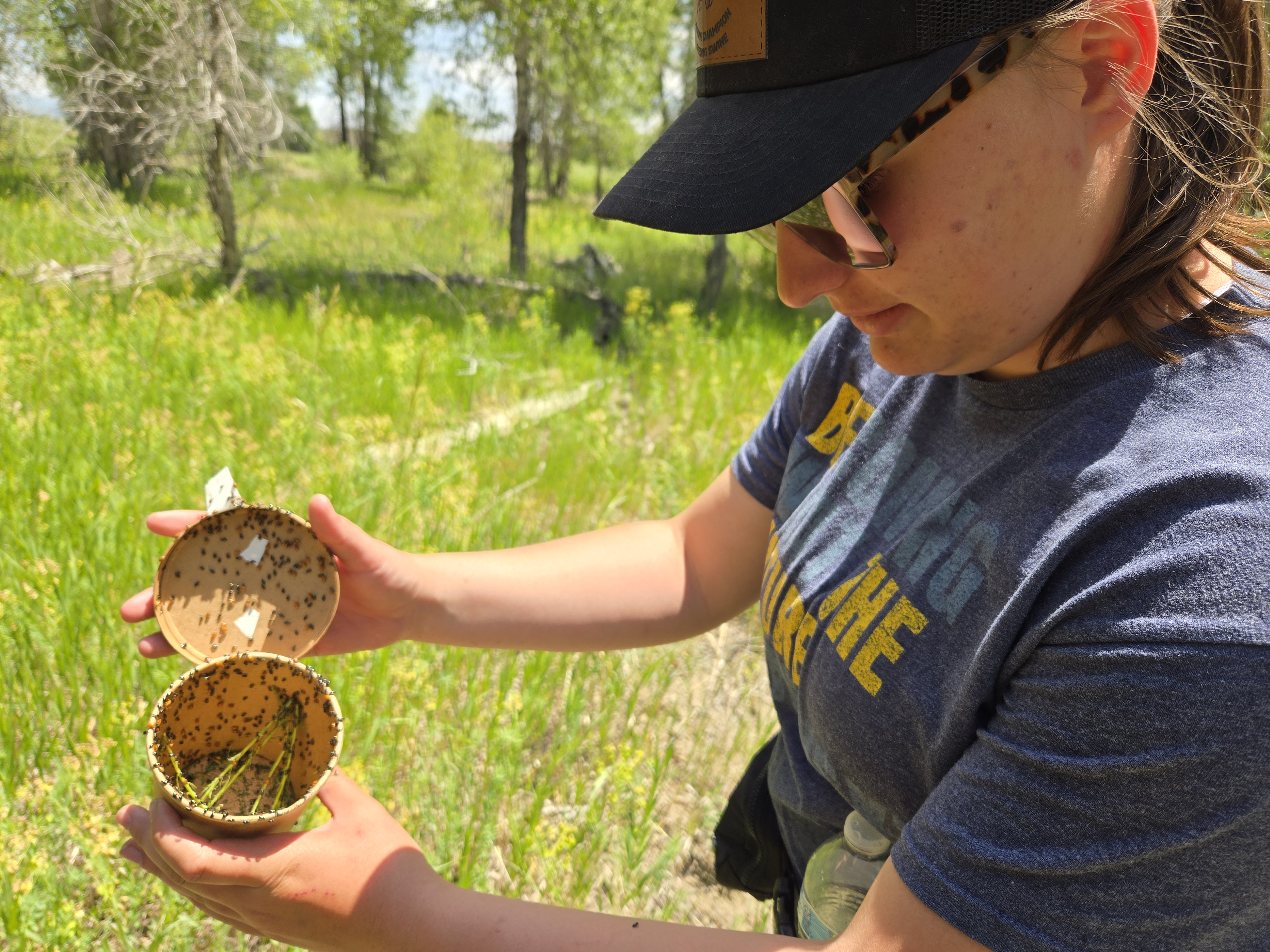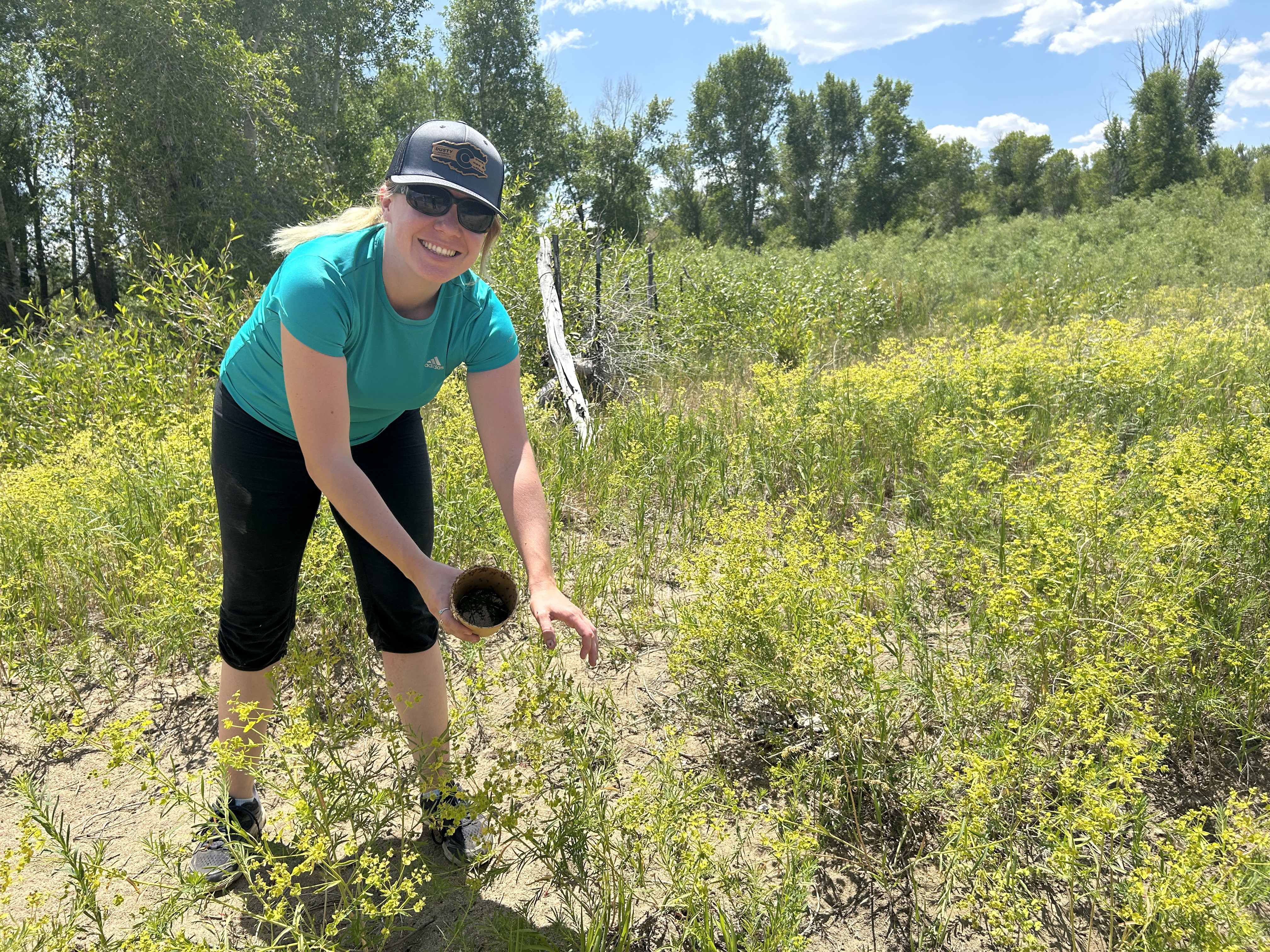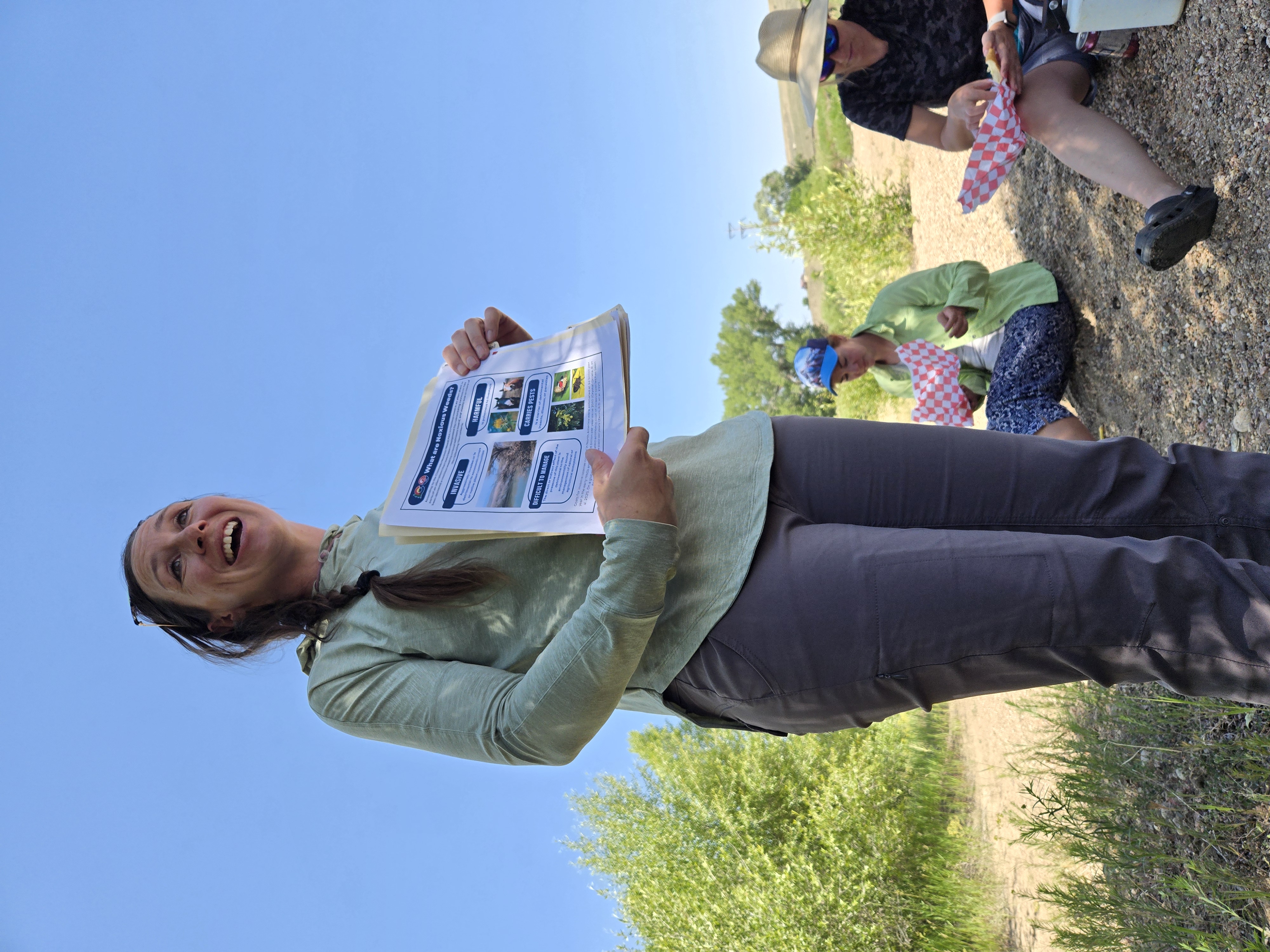By Bethany Howell, Director of Strategic Outreach & Engagement | Read the first part of this blog here.
As our group of 15 floated down the Yampa river in late June, the question on many participants' minds was simple: how did the leafy spurge become such a cause for concern?
Leafy spurge is a List B noxious weed and its prolific spread costs millions of dollars a year in lost productivity for ag land, because it takes over grazing and forage-producing land while producing caustic sap that is toxic to cattle, horses and people.
 The plant’s root system spreads over 30 feet into the soil, which helps it outcompete native plants for water and nutrients. The large root system readily recovers from disturbance, making mechanical control difficult and herbicide control expensive.
The plant’s root system spreads over 30 feet into the soil, which helps it outcompete native plants for water and nutrients. The large root system readily recovers from disturbance, making mechanical control difficult and herbicide control expensive.
These challenges have been in play for more than two decades.
In 2010, Colorado experienced a huge winter snowpack, which resulted in massive flooding in spring 2011. While more water is certainly something to celebrate, another unexpected result occurred. Prior to 2011, leafy spurge had existed in sporadic, easily monitored and mitigated sites along the Yampa. But because of the water’s movement high onto banks and the leafy spurge’s reproductive methods of projecting seeds that float up to 15 feet away from the parent plant, leafy spurge proliferated to alarming amounts along the streambanks for several miles.
The leafy spurge is a serious problem, but it has met its match.

Looking at the leafy spurge flea beetles (genus Aphthona), they appear quite unremarkable. The beetles come in a variety of earth tones ranging from brown and black and are less than 1 cm in size. But their only has one mission in life - devour leafy spurge, reproduce, and repeat.
It’s a thankless and never-ending job, but the beetles are happy to do it. The only problem is that it is a VERY big job, and even with thousands of beetles released each year, leafy spurge control is not an instant gratification kind of method. No biocontrol is.

One issue is getting the insects in the first place. Currently, biologists and field staff are sweeping for them in existing leafy spurge patches spread out on mostly private land, or ordering them from labs. Colorado Parks and Wildlife (CPW) oversees the Yampa State Wildlife Area which includes acres of leafy spurge. Together with the Yampa Leafy Spurge Project, CPW hopes to establish local flea beetle populations for private landowners to harvest on site and take home without having to involve other private landowners.
Once secure in their new homes, managing expectations for everyone involved becomes the next, and perhaps most important, step.

The goal of successful biocontrol, as insect biologists Kristi Gladem with CDA, Pete Williams with Yampa Leafy Spurge Project and Emily Spencer with NPS will tell you, is not complete eradication, but suppression.
Some weed growth will always be present with biocontrol, because that ensures a healthy biological system. Leafy spurge flea beetles eat enough of the plant to damage it and prevent widespread proliferation, but they don’t completely kill the plant every time. For landowners, it becomes a question of what is acceptable for their operations to continue as best they can while sustaining less damage in comparison with overall production.
Of course, weeds don’t adhere to county or property lines anymore than water does, so it’s possible landowners will need to continue placing flea beetles on their properties in adjustment with leafy spurge populations, should some beetles decide to seek greener (or really yellower) pastures.
Management then becomes a holistic endeavor, as local landowners, state agencies, and federal organizations work across their land holdings for mutual benefit. Biocontrol is not a quick process, since releasing and monitoring insects, while managing expectations around biocontrol, are all long term projects. But the benefits to agriculture, wildlife, water, and climate health are invaluable.
The slow and steady endeavor of investing in time and resources is the tortoise rather than the hare approach, but the partnerships are what truly makes the process shine. At the end of the day, as we climb out of the rafts, unclip life jackets, and gather a last snack and cold drink for the road, the relationships built on the river are what last.